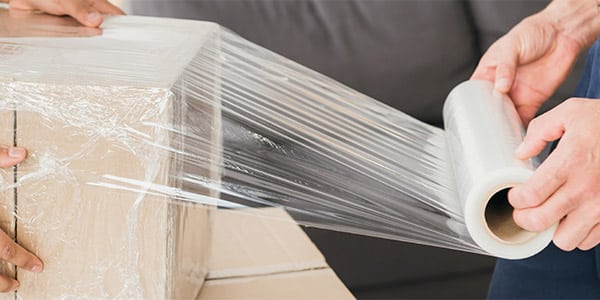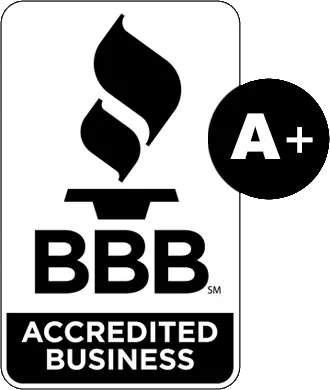Picture this: You just closed on your dream home. You and your family are so excited to start this new chapter together, and the kids can’t wait to decorate their new rooms. But first — you need to get there. For most people, moving is not all sunshine and rainbows — we completely get it. You probably have a million thoughts running through your head. “How are we going to find time to get the house ready to move? What if a family heirloom cracks on its way to the new house? How are we going to find everything quickly when we unpack?
Learn about our biggest tips and tricks for packing safely and efficiently!
What is the best way to prepare for a move?
First and foremost, the best way to prepare for a move is to hire professional movers. Working with a good team will not only bring you peace of mind, but it’s also the best way to ensure that heavy duty pieces like beds, couches and other large furniture stays intact in transit. The second most important thing is to plan. Last-minute packing is the easiest way for things to get lost or break, which is why we recommend the following 5 steps for organized packaging:
1. Create a packing timeline
Now is not the time to procrastinate. By packing slowly over time, you’re much less likely to miss things, you’ll inherently be more organized, and you’ll avoid stressful arguments with your family. Start with your moving date and work backward to set benchmark deadlines for yourself. For example, 3 months out from your move, you could make it a goal to pack up everything in the basement, the guest room and so on. You should also dust items before putting them in boxes. Consider the time of year of your move. If you’re moving in the spring or summer, you can probably start by packing seasonal items like winter coats, shoes, decorations and other winter supplies. There are countless items you probably don’t plan on using between now and the move that you could pack up right now.
2. Gather necessary supplies
The right moving supplies will make the process run much smoother, and save you a huge headache down the road. Here is our shortlist for packing supplies that make the packing process so much easier:
- Box with cardboard dividers
- Boxes in all sizes (from small to extra large)
- Packing tape
- Bubble wrap
- Box cutter
- Paper towels
- Extra blankets
- Box weights
It’s always better to have extra packing material on hand than to come up short.
3. Decide which items to pack first
Let’s start with the basics — a packing list. Seems simple, right? You’d be surprised how many people neglect this step. Ask yourself, “have I used this item in months?” If the answer is no, in the box it goes. This simple exercise will make it easier to pack items you think you’ll need between now and the move (but probably don’t).
4. Label boxes clearly and keep an inventory list
Disorganized packing is one reason why people find moving so stressful. By setting packing guidelines for yourself and other members of your family, you’ll save yourself a huge headache when it comes time to settle into your new home. We recommend creating an inventory list that’s separated into categories that will make it easy for you to compartmentalize both packing and unpacking. Categories should include kitchen items, pet supplies, heavy décor pieces, outdoor/garage items, bedding, toys, etc.
5. Pack Room by Room
Another great tip to minimize stress during packing is to pack room by room. If you have a guest room, or another spare room or space that isn’t used as much by your family, we recommend starting there. Focus on the living room next and pack up books, games, electronics, and other non-essential items before moving onto the bedrooms. When moving with kids, it can be an uphill battle packing up their favorite toys and games. Be sure to let them choose a few toys to keep with them to keep them occupied and happy. When packing up bedrooms, keep all clothing on hangers if possible, that way when you go to unpack you can transfer these items directly into your new closets. The hardest room to pack will likely be the kitchen due to the number of fragile items, and since you likely use these items the most on a daily basis. Pack up smaller kitchen appliances like mixers, blenders, air fryers or other items you can live without for a few days. Prepare yourself to make do with limited items during this time — as if you needed another reason to order pizza!
Take Care When Packing Valuable and Fragile Items
It should come as no surprise that delicate items are the most tricky belongings to pack. Breakable items like glassware require extra bubble wrap, and we even recommend you wrap dishes and mirrors in blankets for some extra cushion. Pack dishes in double corrugated boxes (otherwise known as Dishpack Boxes) We recommend keeping silverware and other heavy kitchenware in a separate box away from dishes to avoid scratches and cracks. Fill any gaps with clothing to prevent items from moving around in transit.
There are also a number of common items you should never pack away in moving boxes. These include things like money, medicine, family heirlooms and family photos, valuable documents, jewelry and more. Don’t pack up flammable items like aerosol cans, paints, propane tanks, or really any chemicals. Keep these items with you in your personal vehicle.
Ask the Experts
If you need help optimizing your packing strategy, or simply don’t know where to start, you’re in the right place. The next best way to guarantee your move goes smoothly is by hiring a reputable mover that’s certified, insured and verified by the Better Business Bureau. That’s where we come in. We pride ourselves on being professional, reliable, efficient and we’ve got the track record to prove it. Contact us and let us support you through your next move!
Other Moving Tips:








